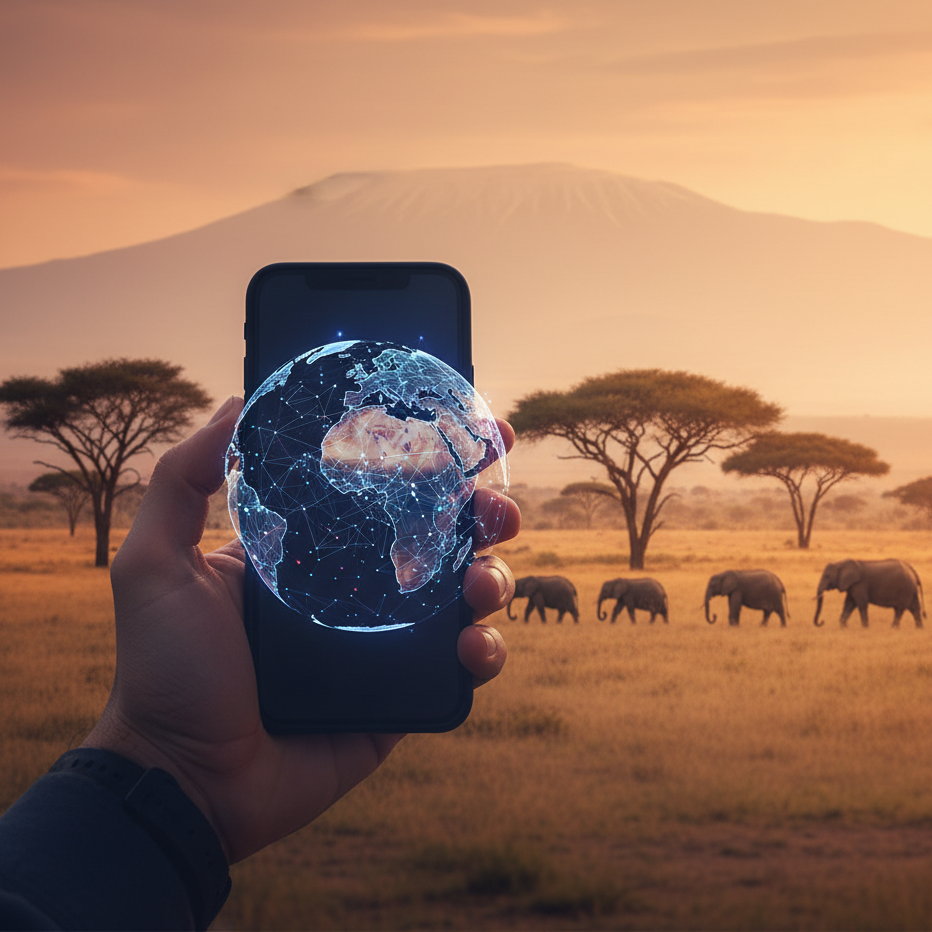Table of Contents:
- How much data do different types of health apps actually use?
- Fitness trackers and activity logs
- Nutrition and diet tracking apps
- Continuous health monitoring devices
- Medical apps and telehealth services
- How can you accurately estimate your own travel data needs?
- What is the role of an eSIM for staying connected abroad?
- Are there ways to reduce your health app data consumption?
- What should you consider when choosing a travel data plan?
- Does using health apps abroad introduce privacy or security risks?
For anyone who keeps an eye on their health while traveling, a smartphone is a must-have. Having consistent data connectivity abroad isn't just a convenience; it's what makes your health and medical apps work when you need them. Reliable data access means your fitness tracker syncs in real time, you can instantly pull up medication schedules, and you're able to use critical services like telehealth consultations in an unfamiliar place.
This constant connection gives you peace of mind, helping you stick to your health routines, manage chronic conditions, and get emergency help without a hitch. It transforms a potential travel stressor into a manageable part of your trip.
How much data do different types of health apps actually use?
A big question for travelers is just how much mobile data their health apps will burn through. The answer varies wildly depending on what the app does, ranging from tiny amounts for simple logs to major data usage for video calls or high-resolution data uploads.
Getting a handle on these differences is the key to picking the right eSIM plan and avoiding surprise data fees.
Fitness trackers and activity logs
Apps linked to fitness trackers like smartwatches are generally light on data. These gadgets usually gather information like your steps, sleep, and heart rate offline, then sync it all in small batches when you have a connection.
For basic syncing, daily data use is often less than 1 MB. However, that number jumps if you use the app's GPS to track a run or bike ride, which can burn through 1 to 10 MB for a 30-minute workout by constantly transmitting map and location data.
Nutrition and diet tracking apps
Nutrition loggers need data to tap into large online food databases, download nutritional facts, and sync your meal logs. Features like barcode scanners also need an internet connection to look up products. While one search is tiny, logging meals frequently can add up. A typical user might go through 1 to 5 MB of data per day, based on how often they use the app and how detailed its features are.
Continuous health monitoring devices
Devices that provide continuous health monitoring, like wearable ECGs or continuous glucose monitors (CGMs), have data needs that vary widely. Consumption really depends on how the device and its app are set up.
Some might only upload data periodically, using a modest amount. Others, built for critical monitoring, could transmit high-resolution sensor data almost constantly, demanding a stable connection and potentially using anywhere from 1 MB to over 20 MB daily. It's vital to know your specific device's needs.
Medical apps and telehealth services
This category has the biggest range of data usage. Simple apps for medication reminders or storing health records use minimal data. The real data hog is telehealth.
A video consultation with a doctor is essentially just a video call. A 20-minute telehealth call can easily use 50 to 200 MB of data or even more, depending on the video quality. If you think you might need to speak with a doctor remotely, you absolutely have to plan for this.
How can you accurately estimate your own travel data needs?
Before you pick a data plan, it's smart to figure out a personalized estimate of your usage. Guessing can lead to you buying way too much data or, even worse, not enough. The best way to do this is by using your phone's built-in tools.
Check your current usage:
Head into your phone's cellular or mobile data settings (like Settings > Cellular on an iPhone or Settings > Network & Internet > Data Usage on Android).
You'll see a list of every app and how much data it has used in the current billing cycle.
Isolate your health apps: Find your main fitness, medical, and wellness apps on that list and jot down how much data each one has consumed.
Run a quick test: For the most accurate picture, reset your phone's data stats. Then, for one full day, use your health apps as you normally would, but stay off Wi-Fi. At the end of the day, check the stats to see your personal daily data footprint.
Extrapolate for your trip: Multiply that daily number by how many days you'll be traveling to get a solid estimate of your total need. It's a good idea to add a 20-30% buffer just in case.
What is the role of an eSIM for staying connected abroad?
An eSIM, or embedded SIM, is a digital SIM that lets you activate a mobile data plan without having to swap out a physical SIM card. For international travelers, this technology is a game-changer.
Instead of hunting for a local SIM card at the airport or getting hit with huge roaming fees from your provider back home, an eSIM lets you buy and activate a data plan for your destination right from your phone, often before you even pack your bags.
This gives you instant internet the moment you land, helps you pick a plan that fits your data estimate perfectly, and makes it easy to stay connected if your trip covers multiple countries.
Are there ways to reduce your health app data consumption?
You can make a small data plan go a long way by actively managing your app settings. Many health apps have built-in features to help you conserve data, which is incredibly useful when you're on the road.
Tweak your app's sync settings: Many health apps let you switch from "real-time" updates to a manual sync or a less frequent schedule, which can dramatically cut down on passive data use.
Lean on Wi-Fi and offline features: Configure your most data-hungry apps to sync data only when connected to a Wi-Fi network, and be sure to download maps, workout plans, or health guides ahead of time at your hotel or a café.
Manage background data through your phone's settings: Disable "Background App Refresh" for specific apps to stop them from using data when they aren't open, and turn off location services for any app that doesn't truly need it.
What should you consider when choosing a travel data plan?
Picking the right travel data plan is a balancing act between your estimated usage, trip length, and budget. Once you know your data footprint, you can make a smarter choice.
Match the plan to your user type: If you're just doing basic fitness syncing and occasional meal logging, a small data package of 1-3 GB should be plenty for a week-long trip.
Plan for high-demand activities: If you depend on continuous health monitoring or think you might need telehealth video calls, you're a heavy user, so opt for a much larger plan of 10 GB or more to avoid service interruptions.
Consider the duration and destination: The length of your trip is a simple multiplier for your data needs, and if you're visiting several countries, a regional or global eSIM plan can provide seamless coverage without forcing you to switch plans.
Does using health apps abroad introduce privacy or security risks?
Yes, you need to be cautious when sending your personal health information across international networks. Health data is highly sensitive, and it's fair to be concerned about how it's handled by different apps and networks. When you use a health app in another country, your data passes through local mobile networks that might operate under different data protection laws than you're used to.
Using an untrusted public Wi-Fi network to sync medical data is particularly risky and can expose your information to interception. This is one area where using a private eSIM data connection is a significant security advantage, as it's generally much more secure than a public hotspot.
It's also worth knowing that some health data, once aggregated and made anonymous, may be used by public health authorities to track health trends among travelers.
Posts you might also like




